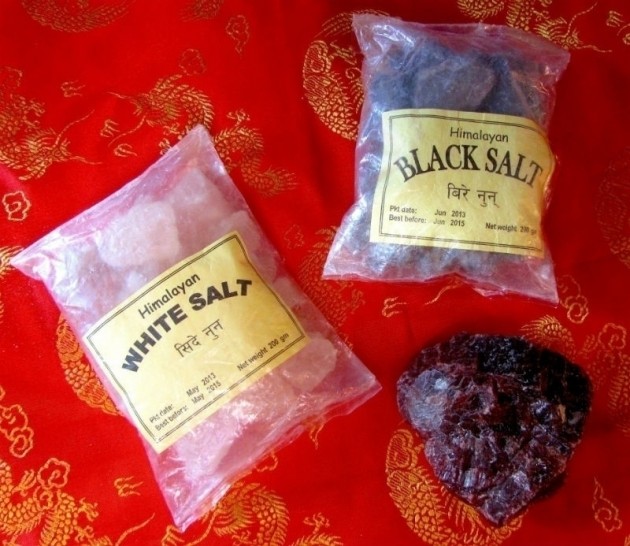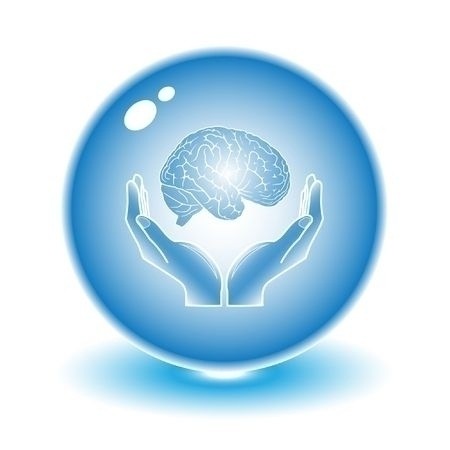Let us examine the evidence accumulated over the past 30 years in all of our planet's inhabited continents, so that we don't become victims of commercial propaganda for another 100 years- we have been mislead for too long as it is!
If, after reading the concise summary of scientific publications that follows, you still have doubts or questions about this topic, please write me an email, and I'll do my best to respond.
A study published in the January, 2001 edition of the American Journal of Clinical Nutrition examined the diets of 1,035 women, particularly focusing on the protein intake from animal and vegetable products. Deborah Sellmeyer, M.D., found that ANIMAL PROTEIN INCREASES BONE LOSS. In her study, women with a high animal-to-vegetable protein ratio were heavier and had higher intake of total protein. These women had a significantly increased rate of bone loss than those who ate just vegetable protein. Women consuming higher rates of animal protein had higher rates of bone loss and hip fracture by a factor of four times." WHY DOES ANIMAL PROTEIN CAUSE BONE LOSS? Dr. Sellmeyer's explanation: "Sulphur-containing amino acids in protein-containing foods are metabolized to sulfuric acid. Animal foods provide predominantly acid precursors. Acidosis stimulates osteoclastic activity and inhibits osteoblast activity." Milk has been called "liquid meat." The average American eats five ounces of animal protein each day in the form of red meat and chicken. At the same time, the average American consumes nearly six times that amount (29.2 ounces) per day of milk and dairy products. How ironic it is that the dairy industry continues to promote the cause of bone disease as the cure. Deborah Sellmeyer's brilliant work is supported by a grant from the National Institutes of Health (comments borrowed from notmilk.com).
The 12-year Harvard study of 78,000 female nurses, published in the American Journal of Public Health (1997, volume 87), concluded:
"There is no significant association between teenaged milk consumption and the risk of adult fractures. Data indicate that frequent milk consumption and higher dietary calcium intakes in middle aged women do not provide protection against hip or forearm fractures...women consuming greater amounts of calcium from dairy foods had significantly increased risks of hip fractures, while no increase in fracture risk was observed for the same levels of calcium from nondairy sources."
THE AUSTRALIAN STUDY: Researchers from the University of Sydney and Westmead Hospital discovered that consumption of dairy foods, especially early in life, increases the risk of hip fractures in old age. In 1994, the American Journal of Epidemiology (volume 139) published a case- controlled study of risk factors for hip fractures in the elderly. This study concludes: "Consumption of dairy products, particularly at age 20 years, were associated with an increased risk of hip fractures." The Australian study provides the mechanism for such a high correlation. The authors explain that the metabolism of dietary protein causes increased urinary excretion of calcium.
A National Institutes of Health study out of the University of California, published in the American Journal of Clinical Nutrition (2001), found that; "Women who ate most of their protein from animal sources had three times the rate of bone loss and 3.7 times the rate of hip fractures of women who ate most of their protein from vegetable sources."
Another study published in the American Journal of Clinical Nutrition (2000) looked at all aspects of diet and bone health and found that high consumption of fruits and vegetables positively affect bone health and that dairy consumption did not. The analysis of all research conducted since 1985 concluded:
"If dairy food intakes confer bone health, one might expect this to have been apparent from the 57 outcomes, which included randomized, controlled trials and longitudinal cohort studies involving 645,000 person-years." The researchers conclude with typical scientific reserve that:"The body of scientific evidence appears inadequate to support a recommendation for daily intake of dairy foods to promote bone health in the general U.S. population."
After looking at 34 published studies in 16 countries, researchers at Yale University found that countries with the highest rates of osteoporosis--including the United States, Sweden, and Finland--are those in which people consume the most meat, milk, and other animal foods. This study also showed that African Americans, who consume, on average, more
than 1,000 mg of calcium per day, are nine times more likely to experience hip fractures than are South African blacks, whose daily calcium intake is only 196 mg. Dr. John McDougall -
"On a nation-by- nation basis, people who consume the most calcium have the weakest bones and the highest rates of osteoporosis. ... Only in those places where calcium and protein are eaten in relatively high quantities does a deficiency of bone calcium exist, due to an excess of animal protein."
In 1995, the American Journal of Clinical Nutrition (vol.61:4) reported:
"Dietary protein increases production of acid in the blood which can be neutralized by calcium mobilized from the skeleton."
The Penn State study, which was published in Pediatrics (2000), the journal of the American Academy of Pediatrics, showed that calcium intake, which ranged from 500 to 1,500 mg per day, has no lasting effect on bone health. "We (had) hypothesized that increased calcium intake would result in better adolescent bone gain. Needless to say, we were surprised to find our hypothesis refuted," one researcher explained.
After reviewing studies on the link between protein intake and urinary calcium loss, nutritional researcher Robert P. Heaney found that as consumption of protein increases, so does the amount of calcium lost in the urine (Journal of the American Dietetic Association, 1993):
"This effect has been documented in several different study designs for more than 70 years," he writes, adding, "[T]he net effect is such that if protein intake is doubled without changing intake of other nutrients, urinary calcium content increases by about 50 percent."
In 1992, B.J. Abelow and colleagues published their study of cross-cultural associations between hip fractures and nutrition. Focusing upon dietary calcium and protein intake, their paper (Calcified Tissue International 50:14-18, 192) should have been accepted as an important tool towards understanding the etiology of bone disease.
Here's what medical doctors and others should have learned from Abelow's research: Nations in which calcium intake averaged 1000 milligrams per day "enjoyed" the highest rates of hip fractures. Nations in which very little calcium was consumed exhibited low rates of hip fractures, contrary to what doctors and dairy industry marketing representatives wish us to believe. Nations in which animal protein intake was high also experienced high rates of hip fractures. The opposite was also true. Nations in which animal protein intake was low had low rates of hip fractures.
"Dietary protein increases production of acid in the blood which can be neutralized by calcium mobilized from the skeleton." - American Journal of Clinical Nutrition, 1995; 61 (4)
In 1994, the American Journal of Epidemiology (volume 139) reported:
"Consumption of dairy products, particularly at age 20 years, were associated with an increased risk of hip fractures...metabolism of dietary protein causes increased urinary excretion of calcium."
In 1988, N.A. Breslau and colleagues identified the relationship between protein-rich diets and calcium metabolism, noting that protein caused calcium loss. His work was published in the Journal of Clinical Endocrinology (1988;66:140-6).
A 1994 study published in the American Journal of Clinical Nutrition (Remer T, Am J Clin Nutr 1994;59:1356-61) found that animal proteins cause calcium to be leached from the bones and excreted in the urine.
"Osteoporosis is caused by a number of things, one of the most important being too much dietary protein." Science 1986;233(4763)
"Even when eating 1,400 mg of calcium daily, one can lose up to 4% of his or her bone mass each year while consuming a high-protein diet." American Journal of Clinical Nutrition 1979;32(4)
"Increasing one's protein intake by 100% may cause calcium loss to double." Journal of Nutrition, 1981; 111 (3)
"The average man in the US eats 175% more protein than the recommended daily allowance and the average woman eats 144% more." Surgeon General's Report on Nutrition and Health, 1988
Opinions of famous doctors:
- The late Dr. Benjamin Spock, in Baby and Child Care (the United States' best selling book, other than the Bible, over the past 50 years), after recommending that no one consume cow's milk and cataloging a host of ills associated with milk consumption (heart disease, cancer, obesity, antibiotic residue, iron deficiency, asthma, ear infections, skin conditions, stomach aches, bloating, and diarrhea), concludes: "In nature, animals do not drink milk after infancy, and that is the normal pattern for humans, too. ...Children stay in better calcium balance when their protein comes from plant sources." Dr. Spock recommends human mother's milk for baby humans, as nature intended.
- "It is hard to turn on the television without hearing commercials suggesting that milk promotes strong bones. The commercials do not point out that only 30 percent of milk's calcium is absorbed by the body or that osteoporosis is common among milk drinkers. Nor do they help you correct the real causes of bone loss." --Dr. Neal Barnard
- Says Dr. T. Colin Campbell, the world's leading epidemiological researcher in the field of diet and health, "The dairy folks, ever since the 1920s, have been enormously successful in cultivating an environment within virtually all segments of our society--from research and education to public relations and politics--to have us believing that cow's milk and its products are manna from heaven. ... Make no mistake about it; the dairy industry has been virtually in total control of any and all public health information that ever rises to the level of public scrutiny...The association between the intake of animal protein and fracture rates appears to be as strong as the association between cigarette smoking and lung cancer."
- "Milk, it now seems clear, is not the solution to poor bone density. To the contrary, it's part of the problem." --Dr. Charles Attwood
- Dr. Walter Willett, a veteran nutrition researcher at the Harvard School of Public Health, says that calcium consumption "has become like a religious crusade," overshadowing true preventive measures such as physical exercise. To hear the dairy industry tell it, if you consume three glasses of milk daily, your bones will be stronger, and you can rest safely knowing that osteoporosis is not in your future.
- Despite the dairy industry funding study after study to try to prove its claims, Dr. John McDougall, upon examining all the available nutritional studies and evidence, concludes: "The primary cause of osteoporosis is the high-protein diet most Americans consume today". "The myth that osteoporosis is caused by calcium deficiency was created to sell dairy products and calcium supplements. There's no truth to it. American women are among the biggest consumers of calcium in the world, and they still have one of the highest levels of osteoporosis in the world. And eating even more dairy products and calcium supplements is not going to change that fact. --Dr. John McDougall, The McDougall Program for Women (2000).
What the evidence does dictate as useful for strong bones is:
- Getting enough vitamin D (if you don't spend any time in the sun, be sure to take a supplement). Specific blood and urine tests, including genetic tests that reveal people's susceptibility to bone loss, will allow you to optimize your vitamin D intake and tailor other supplements, including calcium, to your physiological and medical needs.
- Eliminating animal protein (for a variety of reasons, animal protein causes severe bone deterioration).
- Limiting alcohol consumption (alcohol is toxic to the cells that form bones and inhibits the absorption of calcium).
- Limiting salt intake (sodium leaches calcium out of the bones).
- Not smoking (studies have shown that women who smoke one pack of cigarettes a day have 5 to 10 percent less bone density at menopause than nonsmokers).
- Getting plenty of exercise. Studies have concluded that physical exercise is the key to building strong bones (more important than any other factor). For example, a study published in the British Medical Journal, which followed 1,400 men and women over a 15-year period, found that exercise may be the best protection against hip fractures and that "reduced intake of dietary calcium does not seem to be a risk factor." And Penn State University researchers found that bone density is significantly affected by how much exercise girls get during their teen years, when 40 to 50 percent of their skeletal mass is developed. Consistent with previous research, the Penn State study, which was published in Pediatrics (2000), the journal of the American Academy of Pediatrics, showed that calcium intake, which ranged from 500 to 1,500 mg per day, has no lasting effect on bone health.
Conclusion:
Drinking milk builds dairy producers' profits, but as the above studies show, it's more likely to harm your bones than to help them. And dairy foods are linked to all sorts of other problems, including obesity, attention disorder, learning disabilities, susceptibility to infections and liver disorders, heart disease and cancer (including breast cancer and prostate cancer) and are likely to be contaminated with trace levels of antibiotics, hormones, and other chemicals, including dioxin, one of the most toxic substances known to humans.






